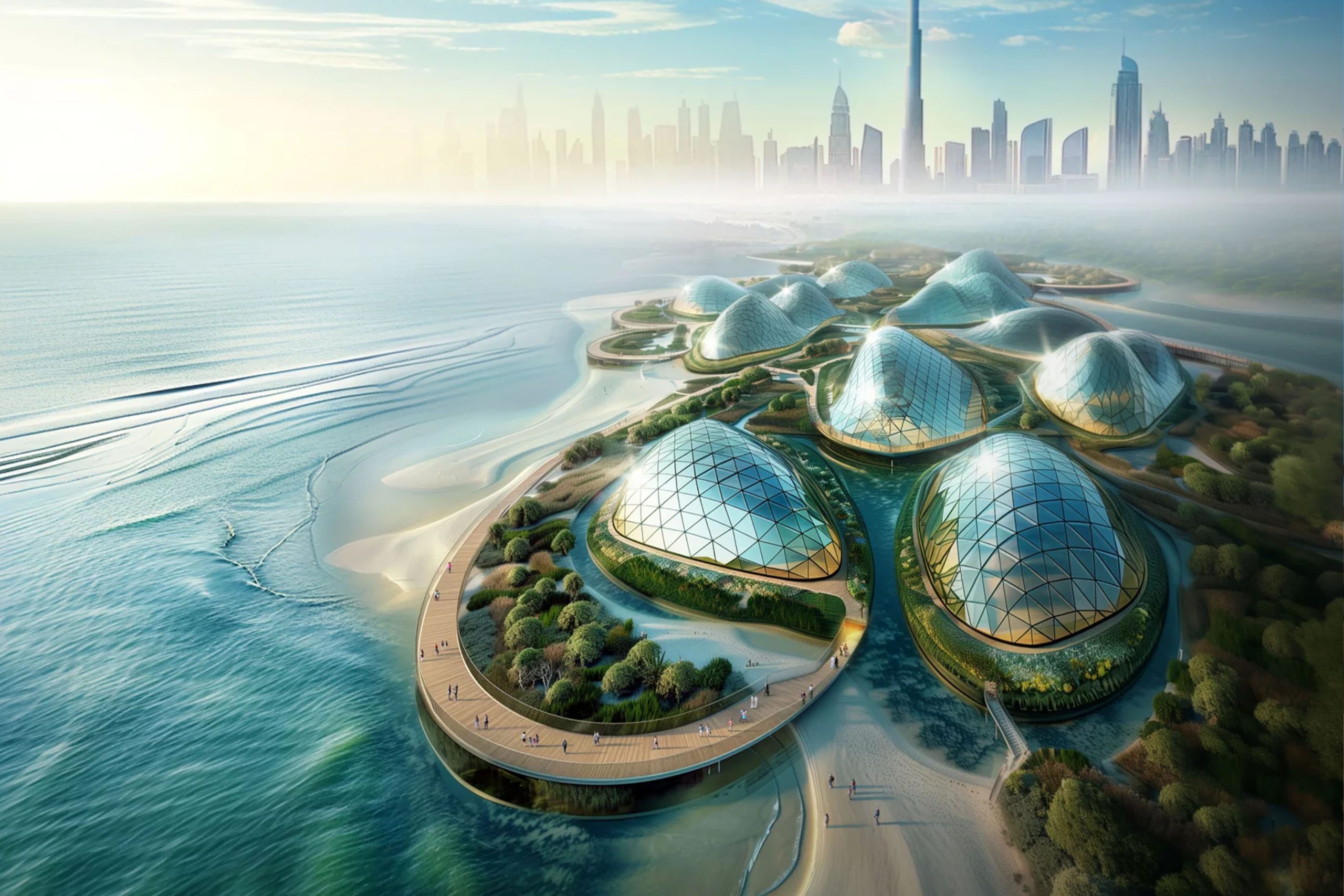The Dubai Mangroves project by URB, an Emirati architectural studio famous for pioneering regenerative cities, is an ambitious ecological masterplan that seeks to transform 72 kilometres of the city’s coastline into the world’s largest coastal regeneration initiative. With a target of planting over 100 million mangrove trees by 2040, the project aims to restore vital ecosystems while integrating community infrastructure, ecotourism, and climate resilience.

Mangroves are known for their ability to sequester carbon. Each tree can absorb up to 12.3 kilograms of CO₂ annually, which makes them one of nature’s most effective tools in the fight against climate change. The Dubai Mangroves could sequester more than 1.2 million tonnes of CO₂ per year, while also stabilising coastlines, enhancing biodiversity, and acting as natural barriers against erosion and storm surges. In addition, the initiative offers a safe haven for marine life and migratory birds.
The project also features a network of visitor-focused amenities: a Mangrove Visitor Hub, a Botanical Museum, and a Conservation Centre dedicated to education and research. The coastal landscape will be enhanced with elevated boardwalks, pocket beach parks, shaded social spaces, cycling paths, and kayaking routes. Thus, visitors will be able to explore and appreciate the mangrove forests without disturbing the fragile ecosystems.

The Dubai Mangroves has identified six pilot zones across Dubai: Jebel Ali Beach, Dubai Marina Beach, Jumeirah Public Beach, Umm Suqeim Beach, Mercato Beach, and Dubai Islands Beach. These sites will serve as testing grounds for methodologies in reforestation, community engagement, and integration of infrastructure. The project will also use cutting-edge technologies to ensure the health and sustainability of the mangrove ecosystems. These include drone-based seed planting, satellite imagery, and AI-driven environmental monitoring.
Ultimately, the Dubai Mangroves project exemplifies a future-forward approach to urbanism, one that coexists with nature and actively repairs and regenerates it. It represents a bold and holistic vision for coastal cities, combining environmental science, community infrastructure, and visionary design to create a resilient urban-nature interface.

To get more information about the Dubai Mangroves, please visit the official web page of the project.
Additionally, you might be interested in reading our articles about the Loop Cycling Highway and Dubai Reefs, URB’s other projects.
To stay connected with the latest art news, consider joining our Telegram channel.





